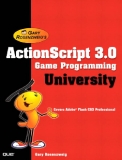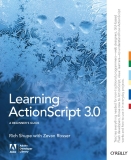Tài liệu Thư viện số
- Công nghệ thông tin (2019 )
- Điện tử viễn thông (1133 )
- Quản trị kinh doanh (1305 )
- Kế toán (1003 )
- Môi trường (968 )
- Du lịch (861 )
- Kiến trúc (424 )
- Xây dựng (1082 )
- Ngoại ngữ (302 )
- Y dược (1391 )
- Khoa học tự nhiên (874 )
- Khoa học xã hội (514 )
- Lý luận chính trị (573 )
- Sau đại học (243 )
- Tài liệu tham khảo khác (252 )
Danh mục TaiLieu.VN
- Mẫu Slide Powerpoint
- Luận Văn - Báo Cáo (344720)
- Kinh Doanh Marketing (65512)
- Kinh Tế - Quản Lý (48934)
- Tài Chính - Ngân Hàng (55898)
- Công Nghệ Thông Tin (142209)
- Tiếng Anh - Ngoại Ngữ (47066)
- Kỹ Thuật - Công Nghệ (134345)
- Khoa Học Tự Nhiên (107174)
- Khoa Học Xã Hội (82451)
- Văn Hoá - Nghệ Thuật (54408)
- Y Tế - Sức Khoẻ (173915)
- Nông - Lâm - Ngư (62504)
- Kỹ Năng Mềm (29016)
- Biểu Mẫu - Văn Bản (27610)
- Giải Trí - Thư Giãn (51994)
- Văn Bản Luật (198854)
- Tài Liệu Phổ Thông (402015)
- Trắc Nghiệm Online (213578)
- Trắc Nghiệm MBTI
- Trắc Nghiệm Holland
Learning ActionScript 3.0
When deciding if the book in your hands will be a good resource for your library, it might help you to know why we, the authors, wrote this particular book. We are both developers who use Flash extensively in our everyday
work, but we are also teachers. Collectively, we have taught thousands of students at multiple universities, training facilities, and conferences, and yet we share one significant common experience. We were consistently told that no feature-rich ActionScript book satisfied this beginner audience.
At first we were surprised at how truly overwhelming this sentiment was, but then we realized that we didn’t have enough information to form an opinion. We didn’t use beginner resources in our work and had only our
own curriculum to go on. So, we started to research how we could fill this void and provide a book to our students that would really help them beyond the classroom. We talked with a lot of students, user groups, and instructors
and began to sketch out a book that we thought would put what we learned into practice.
When ActionScript 3.0 was released, the interested audience grew dramatically. Reactions ranged from excitement to uncertainty to fear, as the ActionScript 3.0 learning curve became apparent. Talk of the Flash Platform splintering into Flex (“developer”) and Flash (“designer”) camps left many designers and beginner programmers more uncertain than ever about their
futures. When Flash CS3 Professional was released, the need for a guiding resource didn’t dissipate (and, in many cases, increased), and we knew it was time to develop the book you hold in your hands.
We hope this book will help Flash users of all kinds—from curious to intimidated, from eager to experienced—embrace the power and performance of ActionScript 3.0. We hope these pages will ease the transition from whatever prior version, if any, of ActionScript might have been in use, to the biggest architectural change to the language since its inception.
work, but we are also teachers. Collectively, we have taught thousands of students at multiple universities, training facilities, and conferences, and yet we share one significant common experience. We were consistently told that no feature-rich ActionScript book satisfied this beginner audience.
At first we were surprised at how truly overwhelming this sentiment was, but then we realized that we didn’t have enough information to form an opinion. We didn’t use beginner resources in our work and had only our
own curriculum to go on. So, we started to research how we could fill this void and provide a book to our students that would really help them beyond the classroom. We talked with a lot of students, user groups, and instructors
and began to sketch out a book that we thought would put what we learned into practice.
When ActionScript 3.0 was released, the interested audience grew dramatically. Reactions ranged from excitement to uncertainty to fear, as the ActionScript 3.0 learning curve became apparent. Talk of the Flash Platform splintering into Flex (“developer”) and Flash (“designer”) camps left many designers and beginner programmers more uncertain than ever about their
futures. When Flash CS3 Professional was released, the need for a guiding resource didn’t dissipate (and, in many cases, increased), and we knew it was time to develop the book you hold in your hands.
We hope this book will help Flash users of all kinds—from curious to intimidated, from eager to experienced—embrace the power and performance of ActionScript 3.0. We hope these pages will ease the transition from whatever prior version, if any, of ActionScript might have been in use, to the biggest architectural change to the language since its inception.
Từ khóa: Learning ActionScript 3.0, actionscript overview, core language fundamentals, drawing with vectors, motion, information technology
384 p tonhung 25/09/2012 197 3



